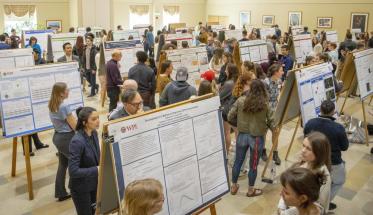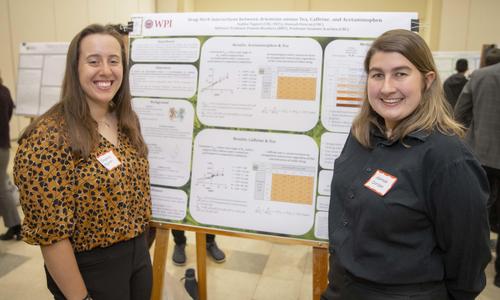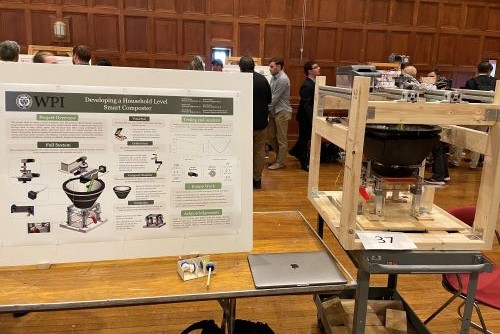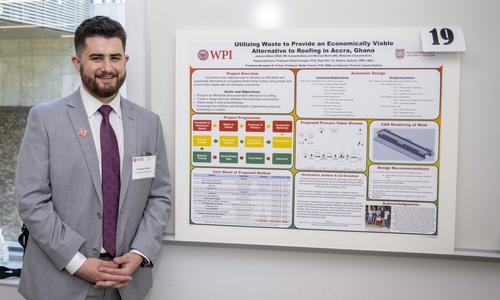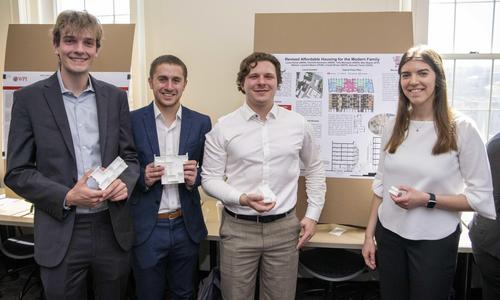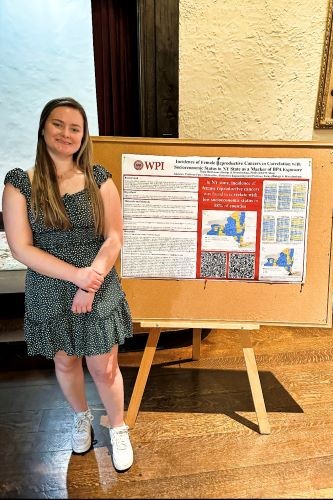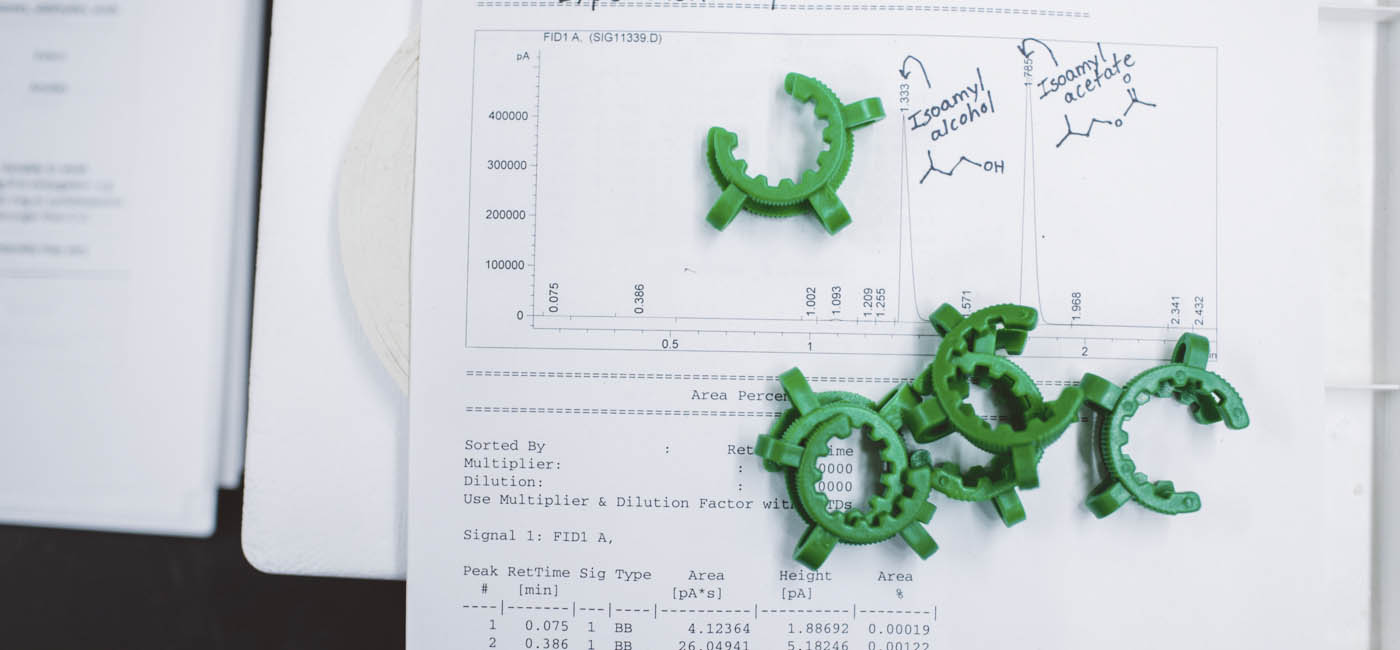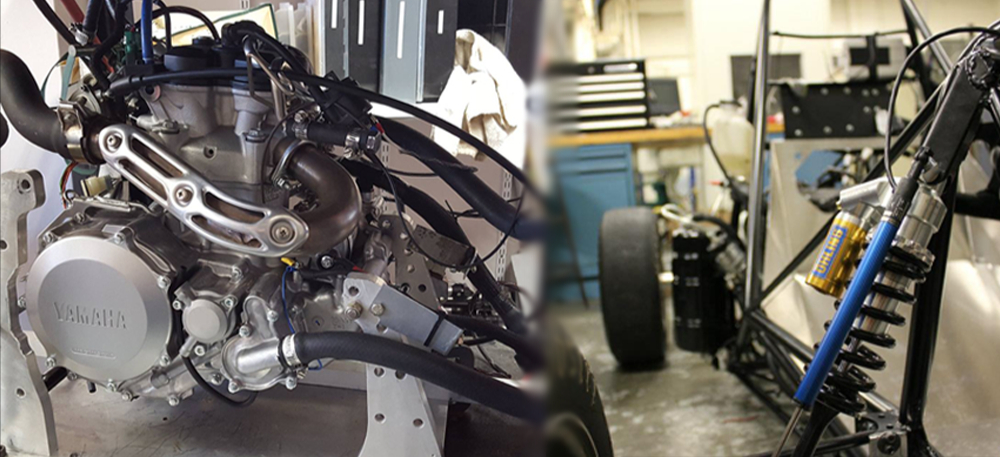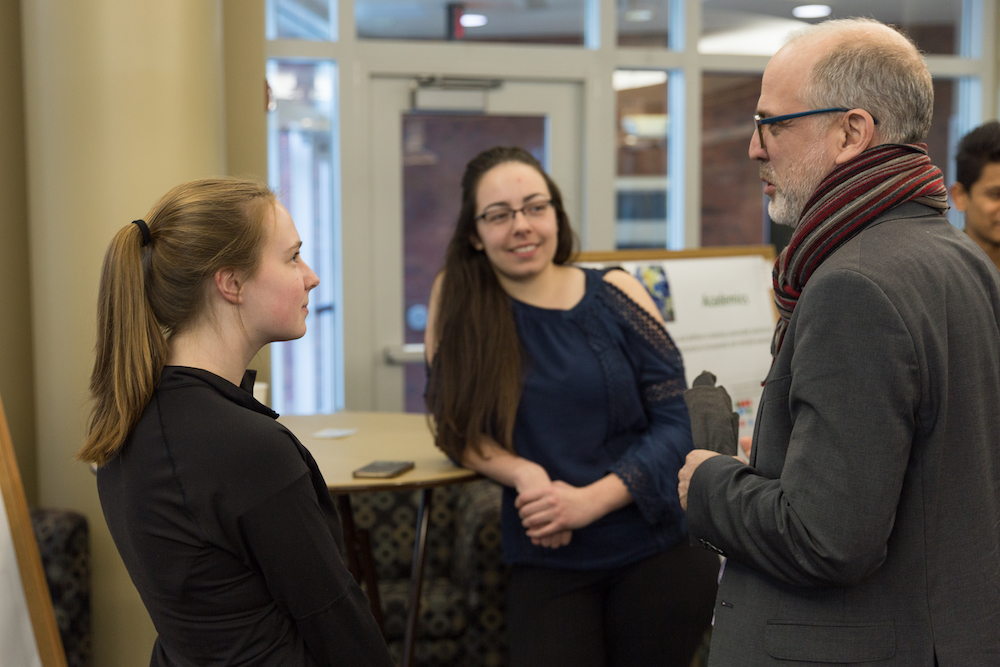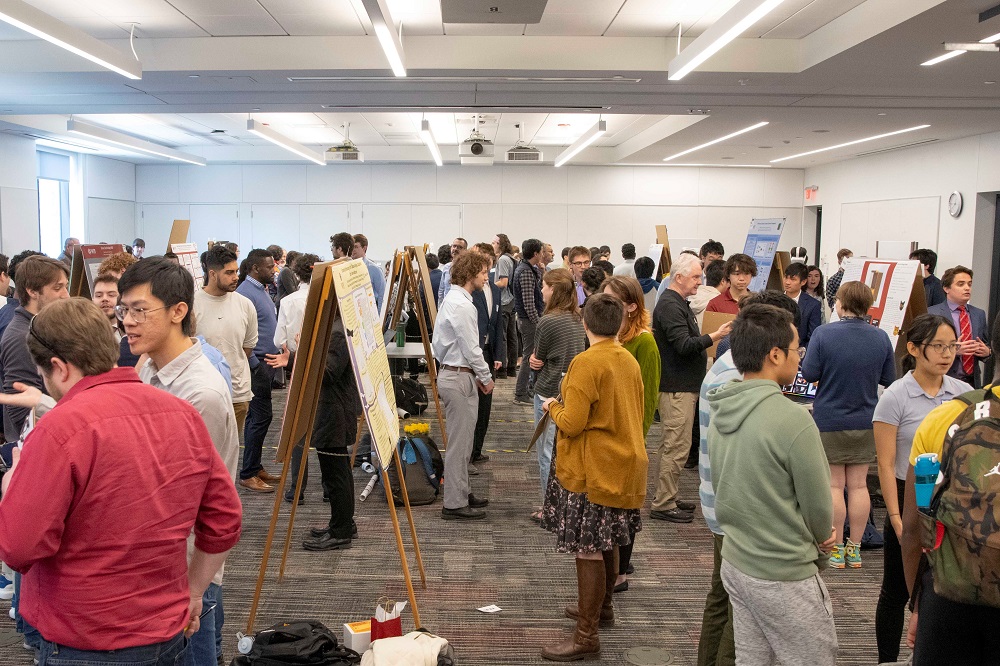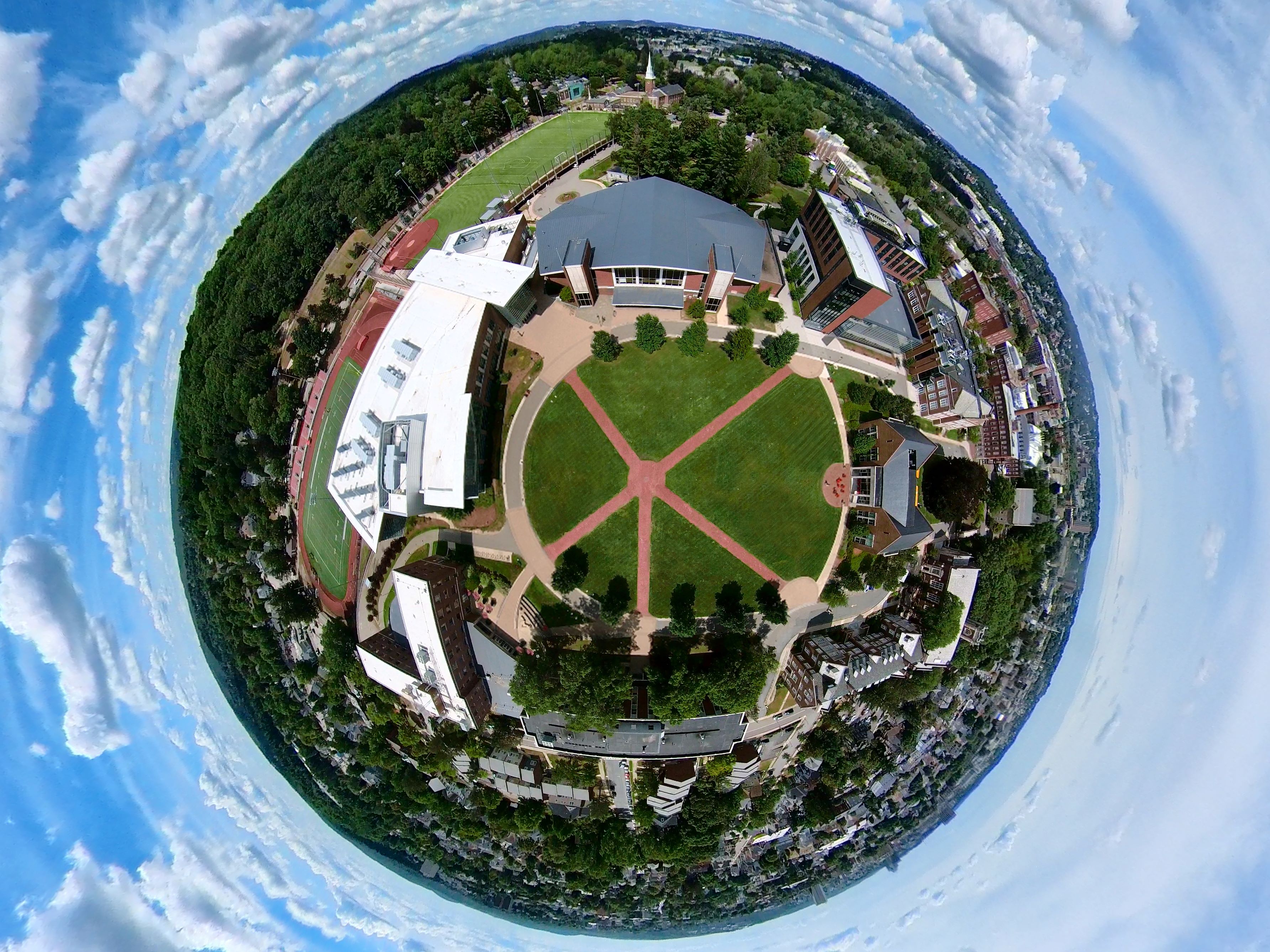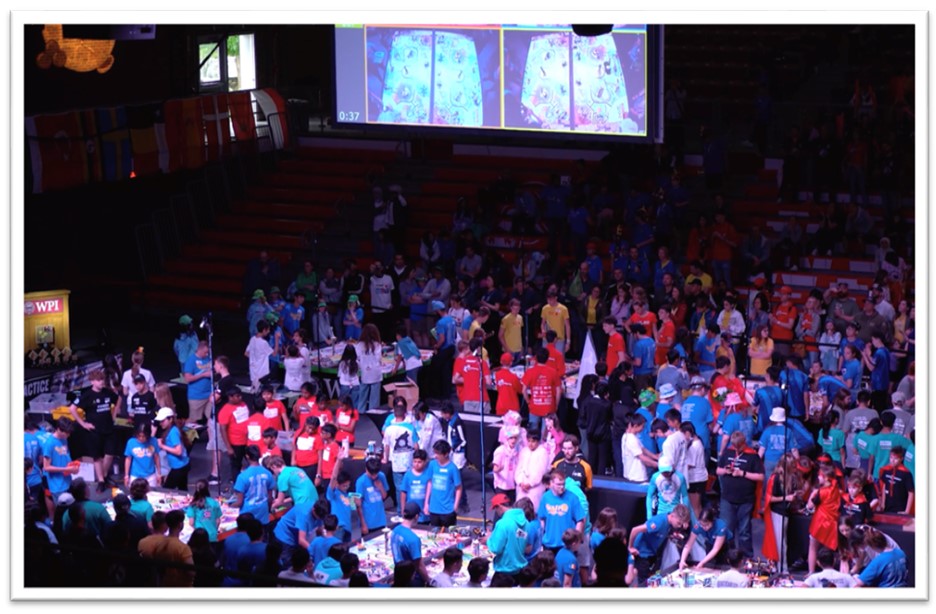In a sign of spring as iconic as daffodils in bloom, the WPI community took time recently to share and celebrate graduating students’ achievements as every senior presented their completed thesis.
The annual Undergraduate Research Projects Showcase (previously Project Presentation Day) is not only an opportunity for students to publicly present the findings of their Major Qualifying Projects, but it also gives faculty, staff, other students, and off-campus partners a glimpse into the wide range of research topics and methodologies that seniors have tackled this year.
“It’s inspiring to see the creativity and skills that our students bring to these projects, as well as the professionalism with which they present their research,” says Arne Gericke, interim dean of undergraduate studies and director of the Office of Undergraduate Research, Design & Creative Activity. “Their experience managing a major project like this—including identifying a problem and researching all of the implications and possible solutions while also managing team dynamics over an extended period of several months—sets them up well for success not only in their first jobs after graduation but throughout their careers.”
This year Gericke and others worked to change the name of the annual project showcase event to more accurately highlight the unique blend of research, design, and creative scholarship at the heart of WPI’s undergraduate education. The WPI showcase was featured on the Council on Undergraduate Research website in support of Undergraduate Research Week 2023.
Below are just a few examples of the diverse work displayed in the 556 projects from more than 1,000 seniors graduating this year.
